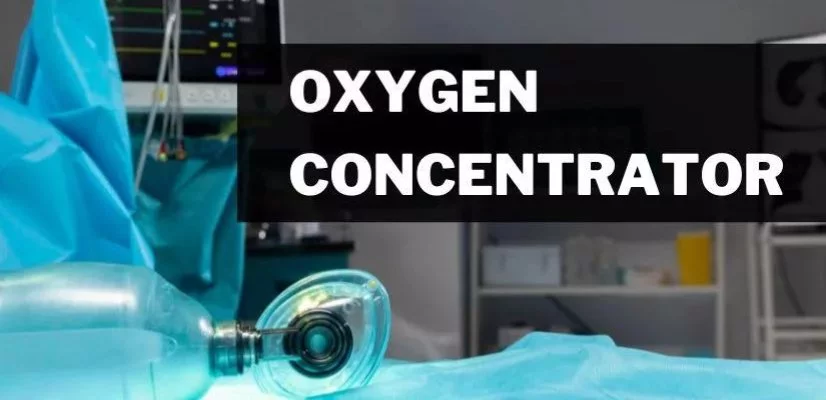Oxygen Concentrator: What is it?
An oxygen concentrator is a medical device designed to deliver oxygen to those who require it. People may require extra oxygen due to certain health conditions such as chronic obstructive pulmonary disease (COPD), cystic fibrosis, or complications arising from COVID-19. But, what sets this machine apart from other sources of oxygen? How does an oxygen concentrator work to benefit the user?
The device works by sucking in ambient air from the surroundings, removing nitrogen from this air, and concentrating the oxygen content. This concentrated oxygen, comprising up to 95% pure oxygen, is then delivered to the patient via a mask or nasal cannula.
Breaking Down the Oxygen Concentrator
The Internal Machinery
The oxygen concentrator’s system includes a compressor that pulls in air from the room. This air then passes through a series of filters that remove particles like dust and bacteria. The air is then led into a cylinder filled with a material called zeolite, which absorbs nitrogen, thereby concentrating the oxygen.

Flow Rate and Purity
Different models of oxygen concentrators offer varying flow rates, typically between 1 and 10 liters per minute. The device’s purity level indicates the concentration of oxygen delivered, with most devices providing 87-95% pure oxygen.
Powering the Device
Most oxygen concentrators require an electrical power source. However, some portable versions operate on battery power, providing flexibility and mobility for users on the go.
Benefits of Using an Oxygen Concentrator
Provision of Continuous Oxygen Supply
Oxygen concentrators are an ideal source of continuous oxygen supply, especially in home-based settings. The device draws in ambient air, thus never running out of oxygen, unlike other oxygen sources such as cylinders.
Cost-Effective and Safe
When compared to oxygen cylinders, concentrators are more cost-effective in the long run. They’re safer too, eliminating the risk of oxygen leakage or explosion that comes with handling and storing oxygen cylinders.
Mobility and Convenience
Portable oxygen concentrators provide mobility to the users, facilitating travel and outdoor activities. They are easy to operate, compact, and come with carrying cases for user convenience.
Understanding the Types of Oxygen Concentrators
Home Oxygen Concentrators
Home oxygen concentrators are larger devices, intended for stationary use. They’re plugged into an electrical outlet and can supply continuous flow oxygen for extended periods.
Portable Oxygen Concentrators
Portable oxygen concentrators (POCs) are smaller, lighter, and designed to be carried around. They usually operate on both AC and DC power and often have a battery option for use during travel.
How to Choose an Oxygen Concentrator
When selecting an oxygen concentrator, consider factors like the patient’s oxygen requirements, lifestyle, power availability, and budget. It’s crucial to consult with a healthcare provider to make an informed decision.
Maintaining Your Oxygen Concentrator
Proper maintenance and care can extend the lifespan of your oxygen concentrator. Regular cleaning, filter replacements, and professional servicing are crucial to ensure the device operates efficiently.
Navigating the World with a Portable Oxygen Concentrator
Traveling with a POC requires some planning. Check with your airline regarding their policies for carrying medical devices, ensure your POC’s battery life meets your travel needs, and carry necessary accessories like extra batteries or power cords.
Frequently Asked Questions
Can anyone use an oxygen concentrator?
No, an oxygen concentrator should be used under the prescription and guidance of a healthcare professional. Oxygen therapy, if misused, can lead to serious health complications.
Can I use a portable oxygen concentrator on a plane?
Yes, most airlines allow passengers to bring a POC onboard. However, it’s important to check with the specific airline for their policy and requirements.
How often should I clean my oxygen concentrator?
The external parts of the oxygen concentrator, such as the cabinet and filters, should be cleaned weekly. However, professional servicing is recommended at least once a year.
Does an oxygen concentrator need to be refilled?
No, oxygen concentrators do not need to be refilled. They work by concentrating the ambient air, thus providing an endless supply of oxygen.
What happens if I use more oxygen than prescribed?
Excessive use of oxygen can lead to oxygen toxicity, resulting in damage to the lungs and central nervous system. Therefore, oxygen should always be used as prescribed.
Can I use a power generator to run my oxygen concentrator during a power outage?
Yes, but it’s crucial that the generator is capable of supplying the required power for the concentrator. Always have a backup plan in place in case of power outages.
Conclusion
Understanding the mechanics, benefits, and maintenance of an oxygen concentrator can significantly improve the experience of those dependent on this vital device. As a lifeline for many, oxygen concentrators continue to evolve, offering better solutions for those requiring supplemental oxygen.
Disclaimer
The information provided is for general knowledge only. Consult your doctor for personalized advice and treatment. Medikart HealthCare not liable for any actions taken based on this info.

